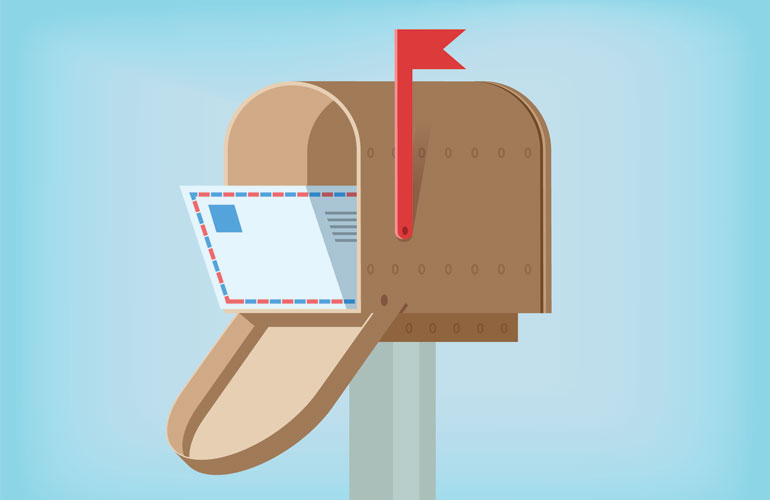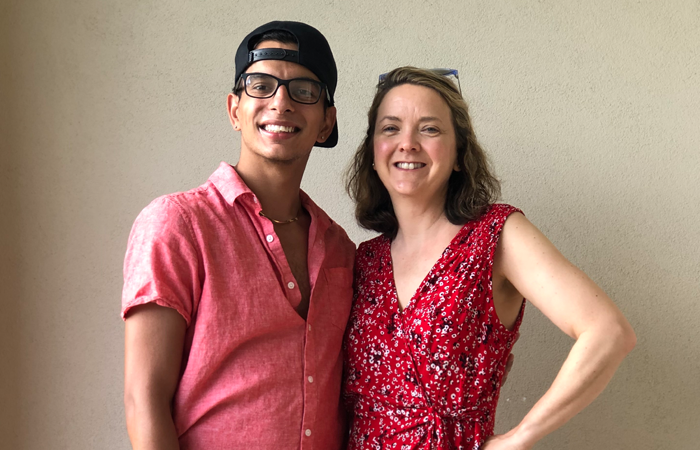Squeezed around a table in a small coffee shop in downtown Taipei, Taiwan, I am poignantly aware of how different the experience of reunion has been for our fourteen-year-old daughter than for her birth mother. From their six-year correspondence and their first meeting four years ago, Amanda has gained much. But as I exchange glances with her birth mother from across the table, I wonder if the same can be said for her. The fact that we are meeting secretly in this restaurant near where she works is a reflection of the pain and complication that reunion has brought to her life.
Questions Without Answers
When Amanda was placed with us as an infant, all we learned from the Taiwanese placing agency was that her birth parents’ whereabouts were unknown. As she grew, our inability to answer questions like, Who do I look like? and Why can’t I have a picture of my birth mother? was a source of frustration for Amanda and for us.
Then, when Amanda was about six years old, we unexpectedly made a brief trip to Taipei. We hoped that by talking with the agency director, we would find answers to some of Amanda’s questions. This was not the case, but we at least had been able to show Amanda her birth country.
When Amanda continued to ask the same questions, we encouraged her to write a letter to her birth mother. We didn’t expect anything would ever come of it, but we sent it to the agency, asking that it be placed in Amanda’s file. At the same time, we began planning a second trip to Taiwan four years hence.
[Expert Audio: Open Adoption—From Fearful to Fearless]
Unexpected Connections
In late 1993, a year after we had sent Amanda’s letter to Taiwan, the director wrote to tell us that she had printed the letter in the agency newsletter. The birth mother had seen it and responded, indicating she was willing to send pictures, provide background information, and, if Amanda wished, to meet.
For the next two years, Amanda and her birth mother exchanged letters and small gifts. Amanda learned about her birth family’s history, and we learned relevant medical information. Amanda’s birth mother expressed her love for Amanda, explaining that she had named Amanda Ehr-Yi because it means memory. She spoke of her sorrow at not being able to care for her daughter.
Amanda told her about our upcoming trip and asked her birth mother if they could meet. Her birth mother said yes, but shortly before we were to leave she wrote again asking if we could postpone our trip for another year. Her words carried a message of pre-reunion panic.
We responded that we could not change our travel plans at this late date, but that we would not pursue a meeting if she would be uncomfortable. The truth was that we, too, were beginning to wonder about the wisdom of a meeting ourselves. Amanda, was exhibiting signs of anxiety as well. She had become moody and more easily upset. She needed comforting at night and even regressed to occasional thumb sucking. She fretted about details: What do I say to her? What if she wants to hug me?
A Birth Mother’s Love
When we arrived in Taipei, we immediately phoned the agency to find out if Amanda’s birth mother had left word about the meeting. She had; we were to meet at the agency office in one hour. After four years of planning, we suddenly felt totally unprepared.
The meeting was more than we could ever have hoped for, however. Amanda’s birth mother spoke freely and emotionally but was respectful of Amanda’s nervousness. She presented us with several small gifts and asked mother-like questions about Amanda’s health, education, and activities. She then explained the circumstances of Amanda’s birth and the tremendously sad story of the decision she was forced to make. Amanda learned without a doubt that her birth mother loved her. She received her birth mother’s permission to be our child.
We returned home tremendously touched by our reunion experience. The correspondence between Amanda and her birth mother continued. Through these letters, Amanda was able to ask questions and receive answers about her birth father. She also learned the names of all of her maternal birth relatives for use in the ever popular family tree school assignment.
In one letter, Amanda’s birth mother wrote, “You are a big girl now. I always think of you and miss you, but I can only keep it in my heart. Are you happy and healthy? I am glad you are growing up so well. You have a good life. I am fine here in Taiwan. I will remember you always.”
Amanda replied: “I feel lucky to be able to write to you. I am happy. I understand why you made the decision you did. I do not feel angry with you.”
[Searching for Birth Families]
The Price of Peace
Nearly two years after meeting her birth mother, Amanda approached us with a request. She wanted to see her birth mother one more time before “I’m all grown up.” So we began another round of planning and saving for a return trip to Taiwan. We decided to travel in the spring of 2000 to celebrate Amanda’s graduation from eighth grade.
This time, preparations were more relaxed. Amanda even asked to bring a friend along on the trip—trusting enough to share her history and her origins with someone her own age. So one morning in early April, 2000, we again found ourselves making our way to the Taiwanese agency office for our prearranged meeting with Amanda’s birth mother.
As soon as we arrived, I knew something was amiss. The agency director, obviously upset, sat behind her desk. In front of her were three packages. There was no sign of Amanda’s birth mother.
The director explained that the gifts were found outside the office door early that morning, with a note attached indicating that the birth mother could not meet with us because her family had learned of her plans and forbade her to see us. In the note, Amanda’s birth mother wrote: “I hope the child can understand the pain in my heart. As long as I live, I will seek a way to meet again in the future. Please forgive me.”
The director fought back tears as she tried to explain the situation to us, apologizing for “our backwards culture.” Then she asked if we might be willing to meet the birth mother at her workplace. The visit would be brief but the surroundings would ensure secrecy.
We agreed and were whisked by taxi to the small coffee shop where we now sit. Amanda gives her birth mother a scrapbook she has made containing photos of herself from infancy to teenager. Her birth mother, deeply touched, thanked us again and again for the opportunity to see her daughter. We are touched by the risk she is willing to take to see her child again. We part promising to see one another again.
Postscript
After we returned home, I wrote to Amanda’s birth mother asking whether, considering all she knows now about the emotions of reuniting with a birth child and the complications it has brought into her life, would she do it again? Her answer? Although the visits are painful, she feels peace knowing her child is alive, well, and happy.
For our part, Amanda’s father and I have had the unforgettable privilege of personally thanking our child’s birth mother for the gift she entrusted us with nearly fourteen years ago—her beloved Erh-Yi.


